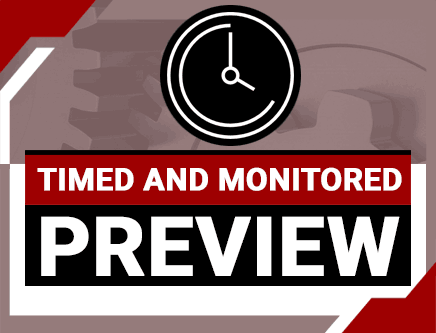An Overview of In-situ Testing: SPT and CPT Explained (Ohio Timed & Monitored Video)
Credit: 1 PDH
Subject Matter Expert: Ismail Emre Kucukkirca, P.E., M.Sc.
In An Overview of In-situ Testing: SPT and CPT Explained , you'll learn ...
- The history, methodology, and practical considerations of SPT and CPT
- The advantages and limitations of each test
- How to correct and interpret SPT-N values, and uncover the correlations between test results and engineering properties
- Basic cone parameters, CPT soil behavior classification, and the critical insights these tests offer for characterizing subsurface conditions effectively
Overview

To meet the Ohio Board's intent that online courses be "paced" by the provider, a timer will be used to record your study time. You will be unable to access the quiz until the required study time of 50 minutes has been met.
Credit: 1 PDH
Duration: 50 minutes
In-situ testing plays an important role in geotechnical engineering, providing critical data for assessing soil properties and estimating the engineering parameters. This course is designed to equip engineers with a thorough understanding of the Standard Penetration Test (SPT) and Cone Penetration Test (CPT), two of the most widely used methods in the field. The course covers the principles, procedures, and practical applications of these two testing techniques, ensuring participants gain both theoretical and hands-on knowledge.
The presentation begins with an overview of in-situ testing and its importance in engineering projects, followed by the history, methodology, and practical considerations of SPT and CPT. Attendees will explore the advantages and limitations of each test, learn how to correct and interpret SPT-N values, and uncover the correlations between test results and engineering properties. Topics also include basic cone parameters, CPT soil behavior classification, and the critical insights these tests offer for characterizing subsurface conditions effectively.
This course is valuable for engineers, architects, project managers, builders, and other professionals involved in working with soil and rock materials. Whether you're just beginning your career or an experienced professional seeking to refresh your knowledge, this presentation delivers the tools and insights needed to advance your expertise and make informed decisions on your projects..
Specific Knowledge or Skill Obtained
This course teaches the following specific knowledge and skills:
- General principles and importance of in-situ testing in geotechnical engineering.
- History, procedure, and applications of Standard Penetration Test (SPT).
- Advantages and limitations of SPT for subsurface investigations.
- Corrections and adjustments for SPT-N values.
- Historical development and foundational concepts of Cone Penetration Test (CPT).
- Basic cone parameters and their significance in soil analysis.
- Advantages and limitations of CPT in geotechnical investigations.
- Classification of soil behavior types using CPT data..
- Correlations between CPT results and engineering properties of soils.
Certificate of Completion
You will be able to immediately print a certificate of completion after passing a multiple-choice quiz consisting of 11 questions. PDH credits are not awarded until the course is completed and quiz is passed.
| This course is applicable to professional engineers in: | ||
| Alabama (P.E.) | Alaska (P.E.) | Arkansas (P.E.) |
| Delaware (P.E.) | District of Columbia (P.E.) | Florida (P.E. Area of Practice) |
| Georgia (P.E.) | Idaho (P.E.) | Illinois (P.E.) |
| Illinois (S.E.) | Indiana (P.E.) | Iowa (P.E.) |
| Kansas (P.E.) | Kentucky (P.E.) | Louisiana (P.E.) |
| Maine (P.E.) | Maryland (P.E.) | Michigan (P.E.) |
| Minnesota (P.E.) | Mississippi (P.E.) | Missouri (P.E.) |
| Montana (P.E.) | Nebraska (P.E.) | Nevada (P.E.) |
| New Hampshire (P.E.) | New Jersey (P.E.) | New Mexico (P.E.) |
| New York (P.E.) | North Carolina (P.E.) | North Dakota (P.E.) |
| Ohio (P.E. Timed & Monitored) | Oklahoma (P.E.) | Oregon (P.E.) |
| Pennsylvania (P.E.) | South Carolina (P.E.) | South Dakota (P.E.) |
| Tennessee (P.E.) | Texas (P.E.) | Utah (P.E.) |
| Vermont (P.E.) | Virginia (P.E.) | West Virginia (P.E.) |
| Wisconsin (P.E.) | Wyoming (P.E.) | |


 Live support chat
Live support chat



